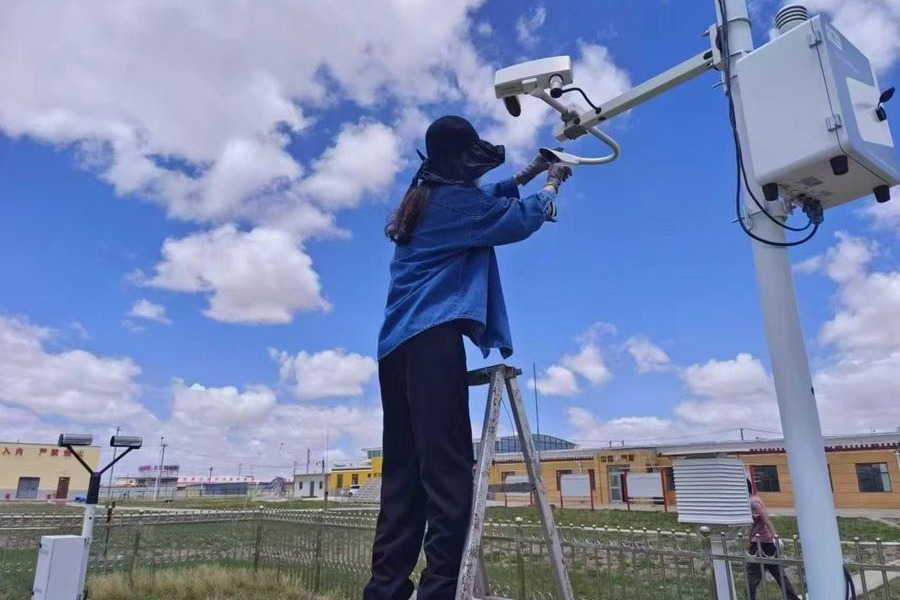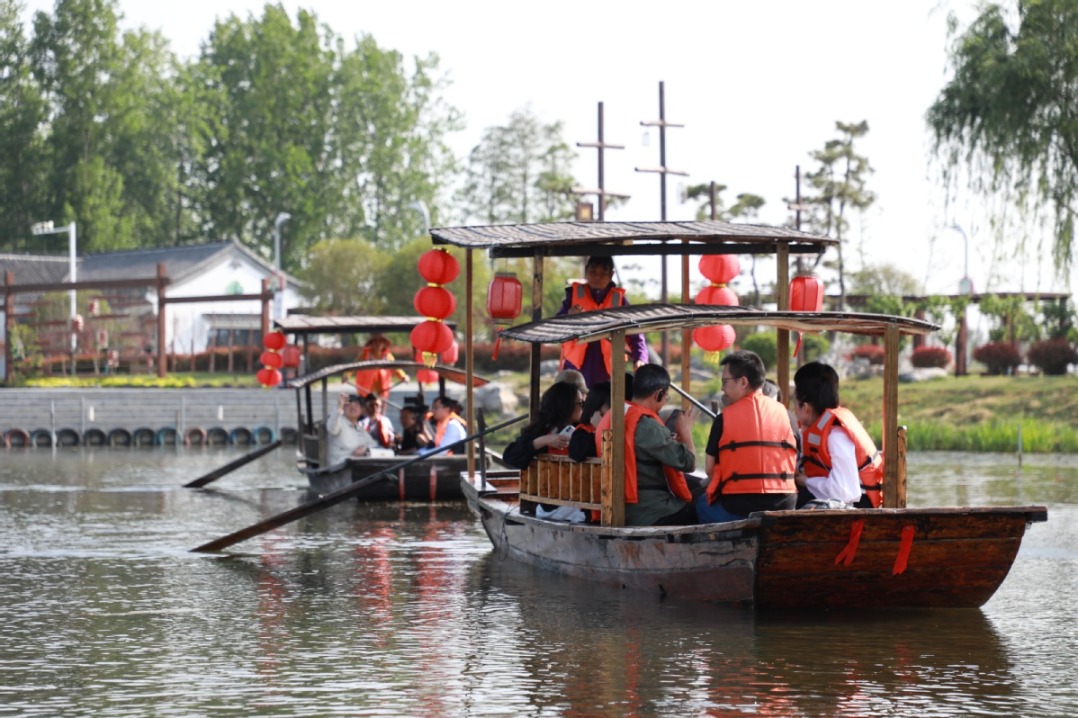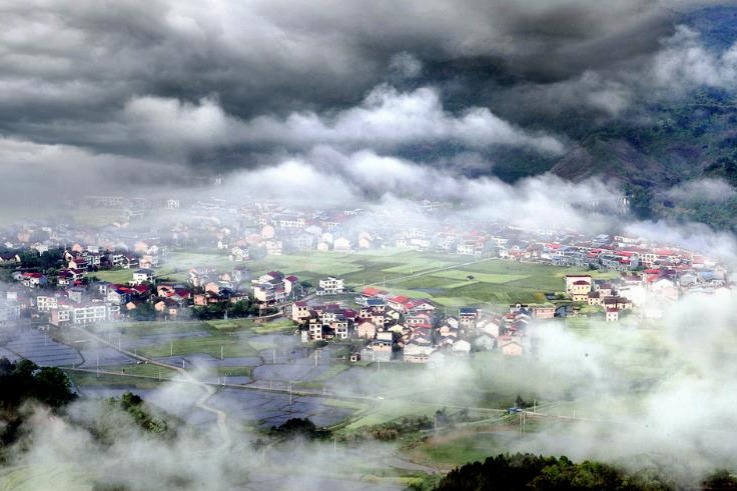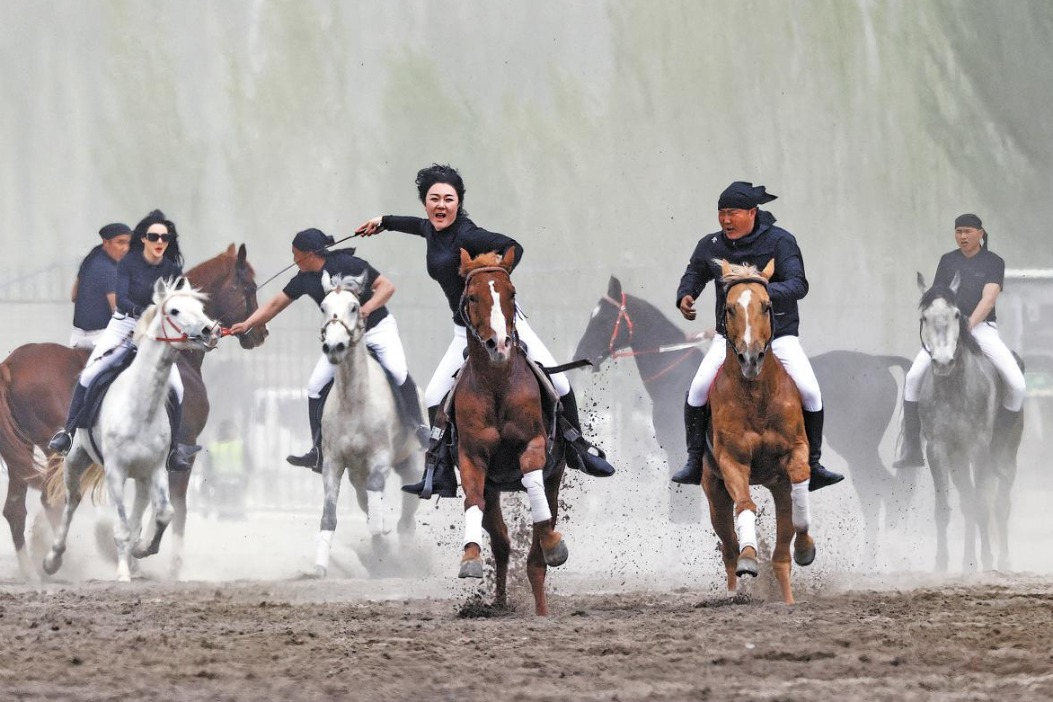Decades-long efforts turn North China deserts into oases

HOHHOT -- In the freezing winter, on the fringes of the Kubuqi Desert in North China's Inner Mongolia autonomous region, dedicated sand control workers are busy mending and reinforcing defenses in the form of straw checkerboards -- featuring straw placed in a checkerboard pattern on the desert surface to secure dunes.
The workers are racing against time to complete their tasks before the spring winds arrive to once again test the success of their efforts. Farmer Zhang Yong, 50, is one of these workers. He meticulously arranges wheat straw along pre-marked square lines on the sandy ground, before firmly tamping them down with a shovel.
"Straw checkerboards serve as a method to prevent wind erosion and retain moisture. By repairing them each winter, we ensure they can firmly hold the shifting sand in the coming spring," Zhang said.
The Kubuqi Desert, China's seventh-largest desert also known as Hobq Desert, spans an area of more than 14,000 square kilometers. For Urgen, another local who grew up deep within the desert, his childhood memories are dominated by a single color -- yellow. "There was an endless supply of sand on our stoves and cabinets, and all we saw outside were sand dunes," Urgen recalled.
In the 1950s and 1960s, with strong government support, Inner Mongolia began constructing sand control stations and initiated afforestation efforts along the northern edge of the Kubuqi Desert. Since then, Urgen's hometown has gradually turned green.
"Back then, people treated afforestation in the Kubuqi Desert as a sacred mission," Urgen said.
Inner Mongolia, as one of the regions in China most severely affected by desertification and sandification, has long prioritized sand control as a key task in combating these threats. It has continuously implemented the Three-North Shelterbelt Forest Program and promoted other ecological projects including afforestation and enforcement of grazing bans.
According to the third session of the 14th People's Congress of Inner Mongolia Autonomous Region, which opened on Tuesday, the region in 2024 exceeded its annual targets for desert control, afforestation and grass planting, completing 113 percent, 220 percent and 148 percent of its goals, respectively.
Today, Inner Mongolia boasts the largest forest area in the country, at some 23.8 million hectares, while its grassland vegetation cover has reached 45 percent, the best level since 1990, local authorities said.
In the Hunshandake sandy land in the region's Xilingol League, herder Wangjil's more than 666-hectare pasture is now a sea of green, with shrubs covering the ground. Occasionally, a series of slender, angular footprints can be seen on the ground -- tracks probably left by roe deer, according to Wangjil.
Starting in 1998, Wangjil began planting grass and trees in the sandy sections of his pasture. Through relentless experimentation, he managed to establish sand barriers on shifting dunes, while planting drought-resistant vegetation on fixed dunes.
The herdsman said sand control is a long-term endeavor that requires great perseverance. Over the past 27 years, he has planted greenery on more than 153 hectares of dunes and sandpits, with plants including over 22,000 drought-resistant saplings.
It is through many years of persistent efforts of both local residents and the government that the Hunshandake sandy land managed to achieve a historic transformation, with 252,000 hectares of sand land controlled in 2024.
"During sand control efforts, China has contributed its wisdom to the global endeavor of sand control," said Lu Qi, chief scientist at the Chinese Academy of Forestry.
Currently, Inner Mongolia's desert control methods, technologies and achievements have been replicated in other Chinese regions like Xinjiang, Xizang, Qinghai and Gansu, and are promoted to countries like Saudi Arabia and Mongolia.
In 2024, Inner Mongolia provided sand control skills training to Mongolia and exported more than 2.8 million saplings to support Mongolia's sand control efforts.
- Nation's job market grows in 1st quarter
- SCO health officials push for deeper coordination toward better future
- China's State Council appoints, removes officials
- International students explore AI-powered Chinese medicine production
- Platform economy giving rise to new health concerns
- Live wedding painting captures love and memories




































